Abstract
1. A method, based on the use of the isolated frog rectus abdominis preparation, is described for studying quantitatively the hydrolysis of suxamethonium at low concentrations.
2. Rates of hydrolysis of butyrylcholine, 10 mM, benzoylcholine, 0·05 mM, and suxamethonium, 0·025 mM, by plasma from different species and human plasma with genetic variants of cholinesterase were measured.
3. The rates of hydrolysis of suxamethonium by different types of plasma vary widely. Human plasma with usual cholinesterase and monkey plasma hydrolyse suxamethonium more speedily than do the plasma of cats, dogs and rats, and human plasma with either atypical or fluoride resistant cholinesterase. This is only to a small extent attributable to differences in enzyme concentration and not explained by the presence of an inhibitor.
4. The Km values for butyrylcholine are very similar for different types of plasma but the KI values for suxamethonium in the system plasma-butyrylcholine-suxamethonium vary greatly.
5. These results and observations on the inhibition by decamethonium of the hydrolysis of butyrylcholine are consistent with the interpretation that the rates of hydrolysis of suxamethonium, 0·025 mM, obtained with different types of plasma vary because they are a function of two variables, the affinity of the ester for cholinesterase and the stability of the monosuccinyl derivative of the cholinesterase. It seems that human plasma with atypical cholinesterase hydrolyses suxamethonium much slower than does human plasma with usual cholinesterase mainly or solely because of differences in affinity of the ester for the two enzymes. On the other hand, cat plasma appears to hydrolyse suxamethonium much slower than does human plasma with usual cholinesterase mainly because the monosuccinyl derivative of cholinesterase in cat plasma is much more stable than that in human plasma. The reverse might apply for monkey plasma.
6. Inhibition by dibucaine or sodium fluoride of the hydrolysis of benzoylcholine is not a general guide to rates of hydrolysis of suxamethonium by different types of plasma.
Full text
PDF

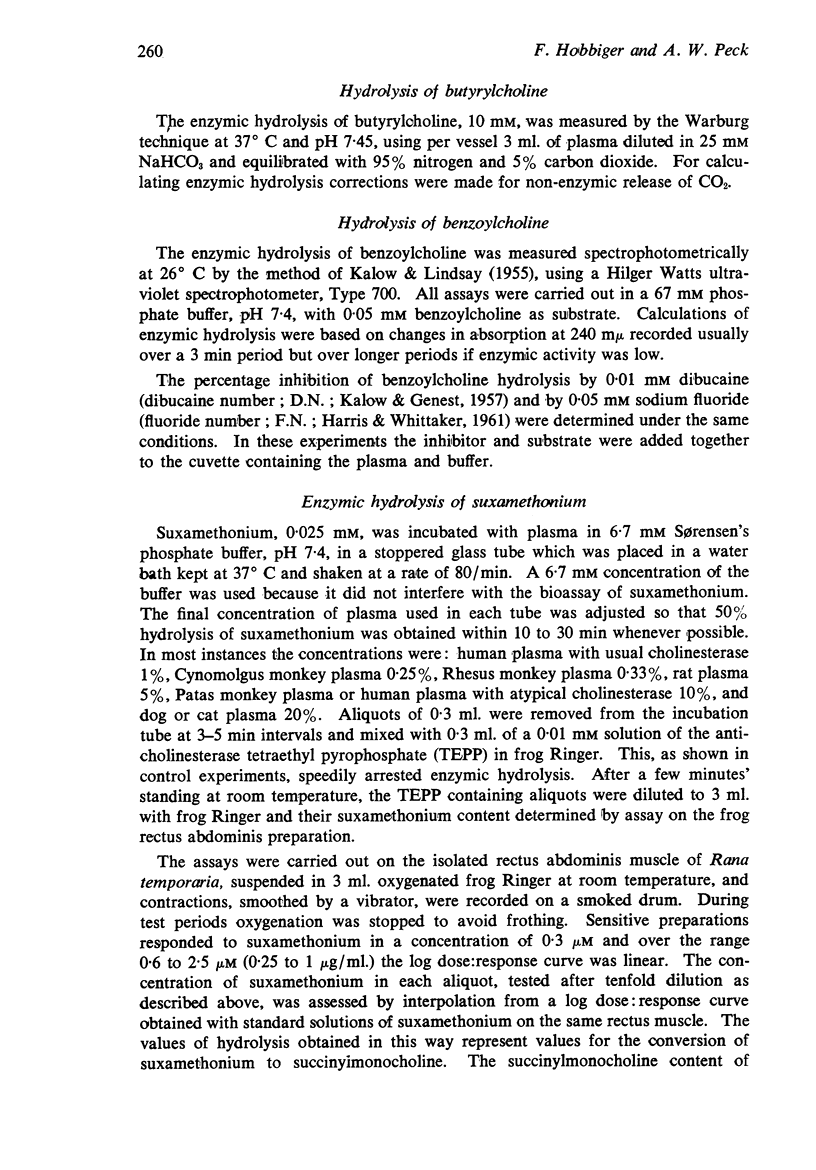
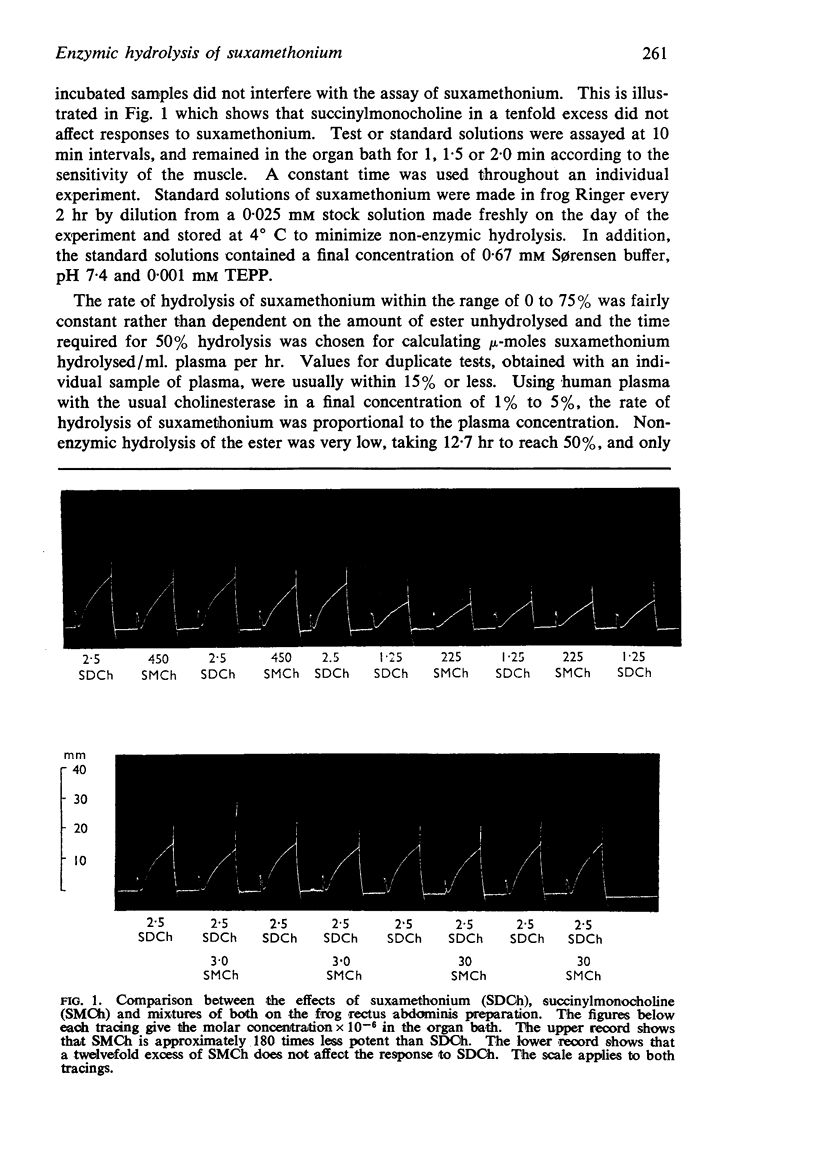
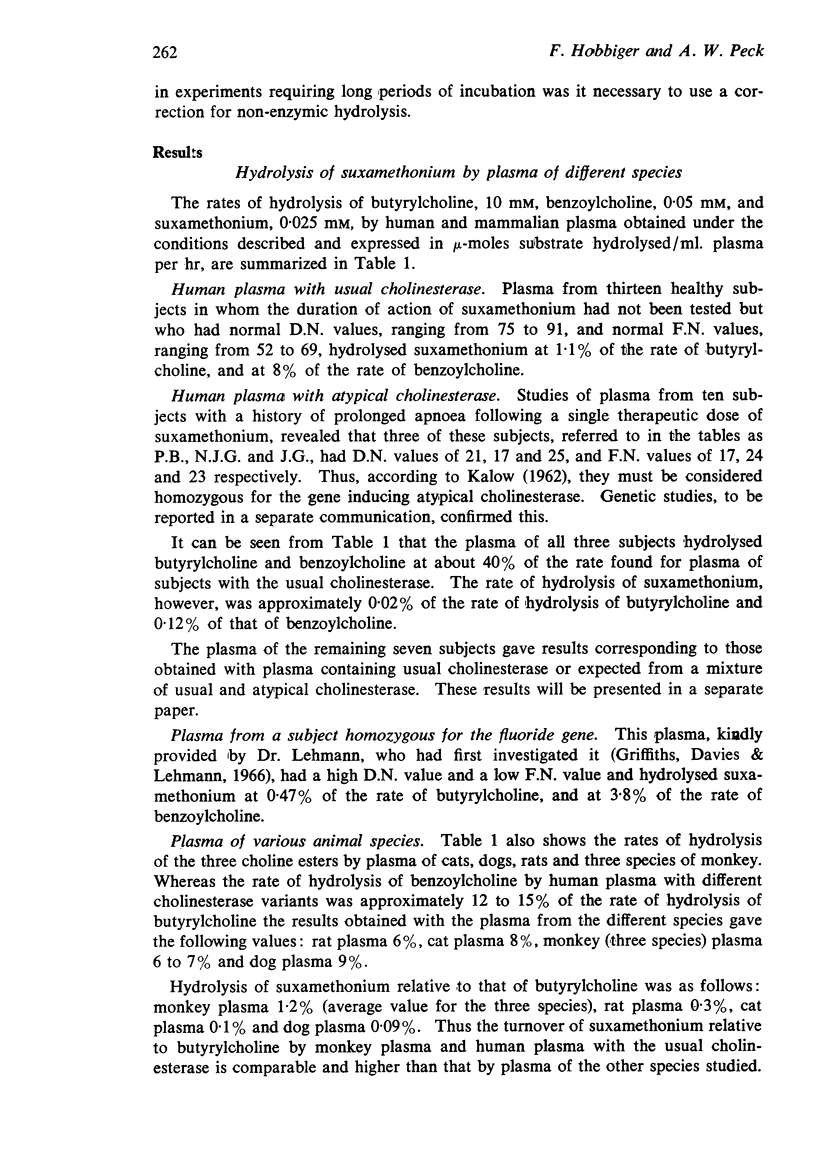
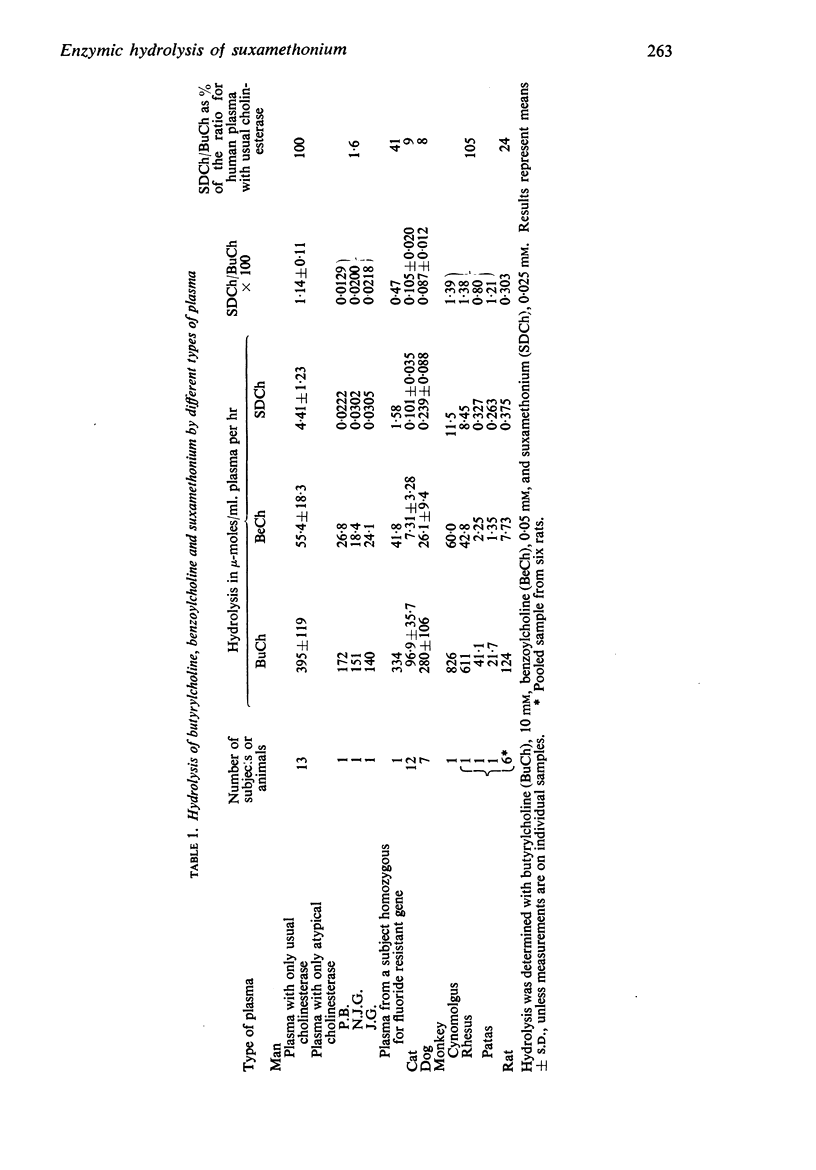
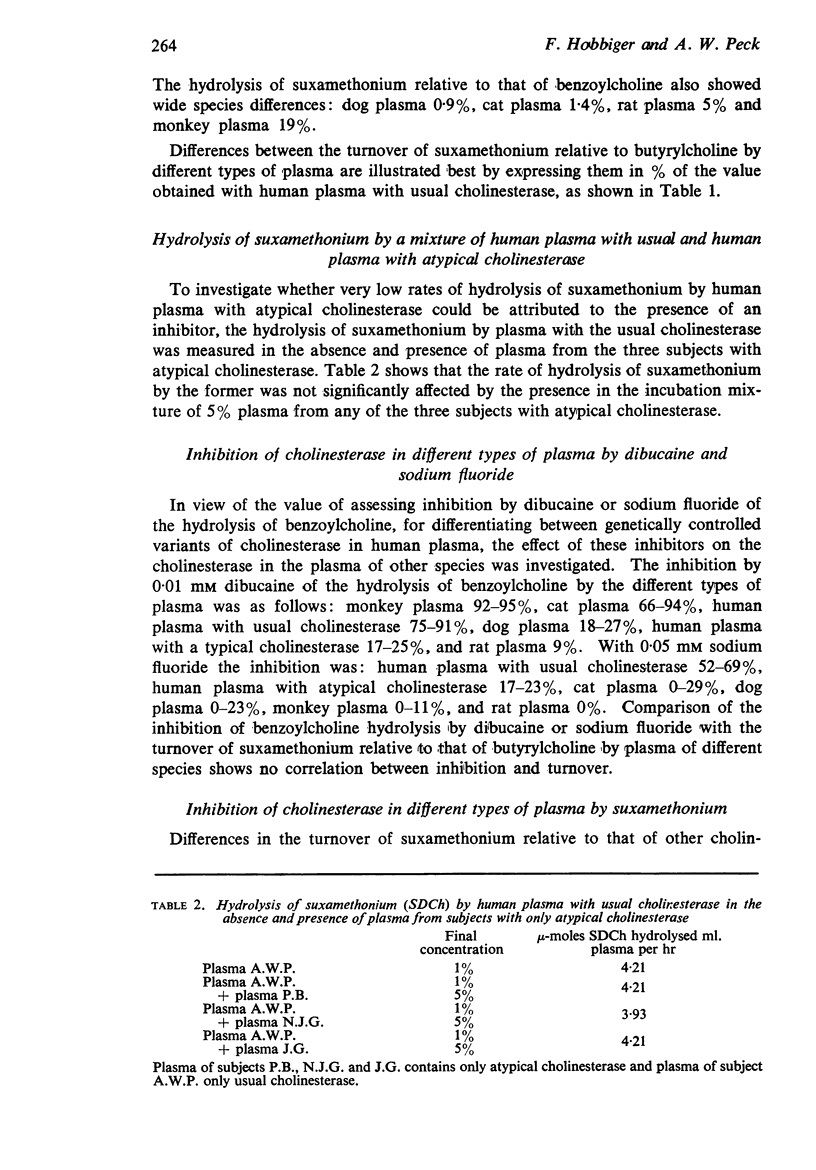
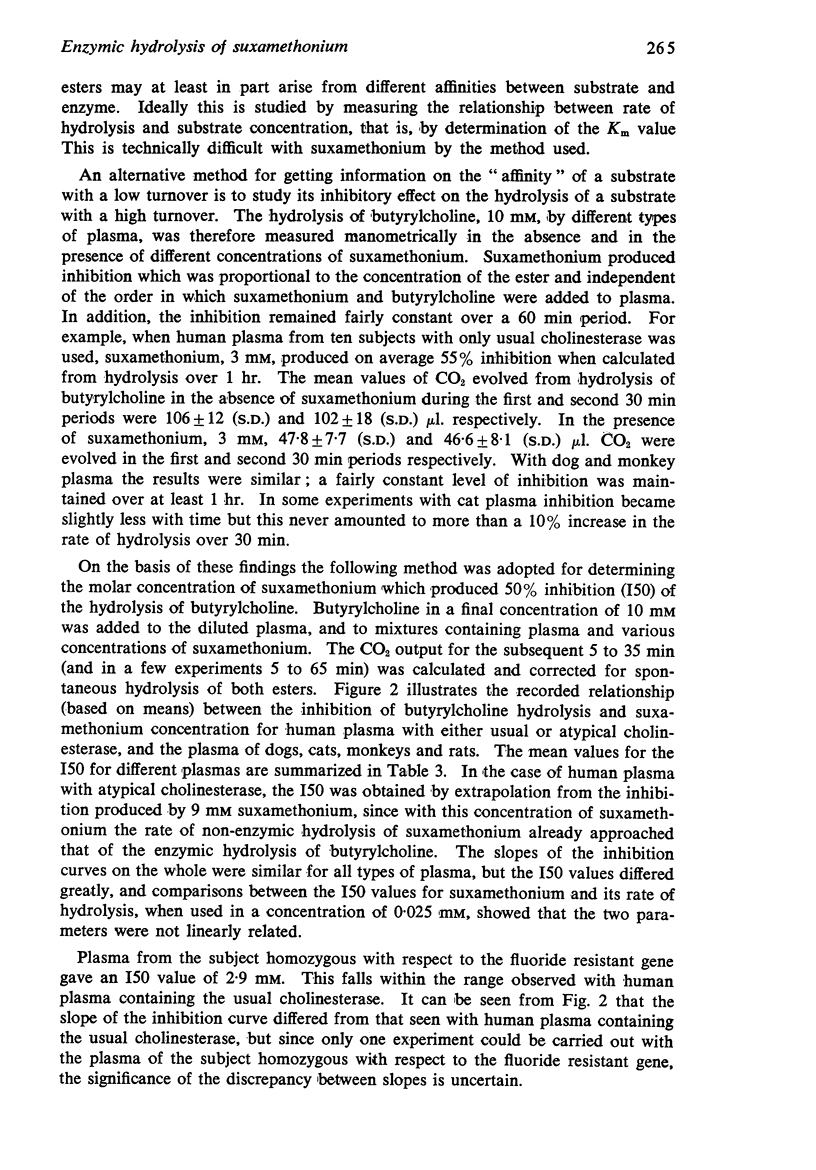

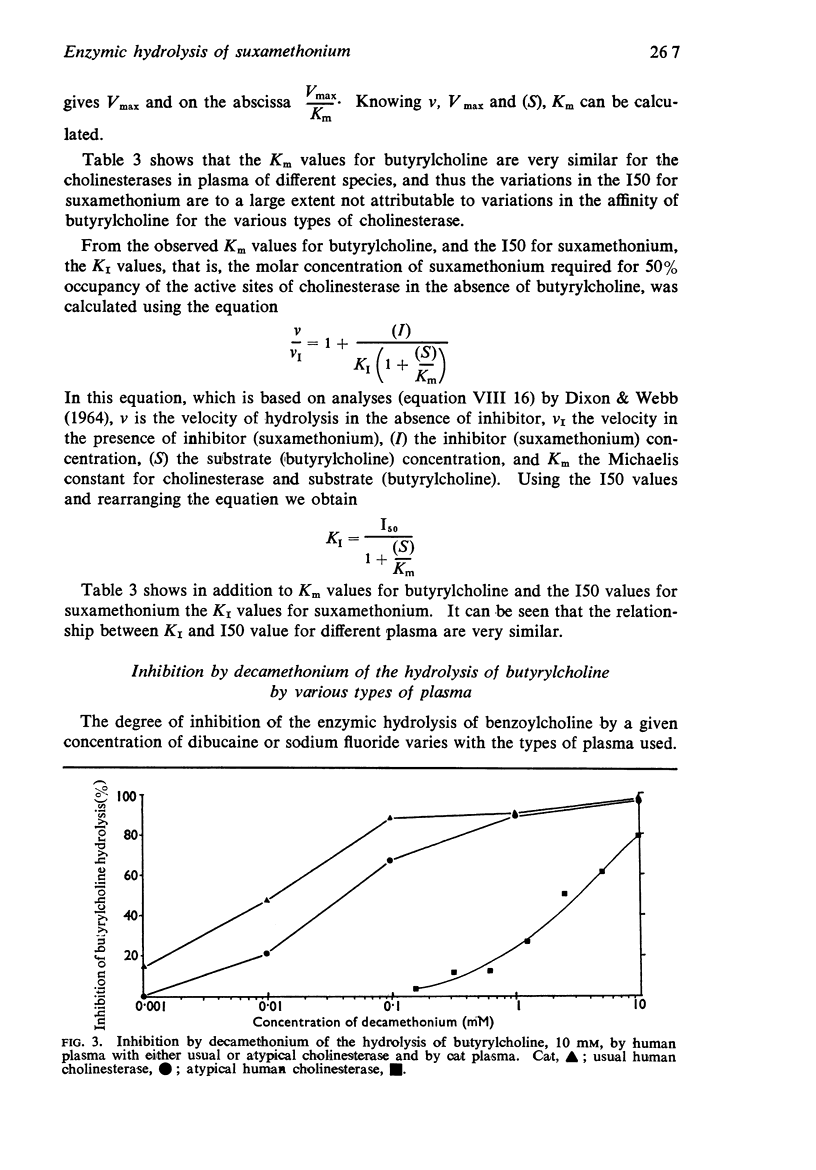

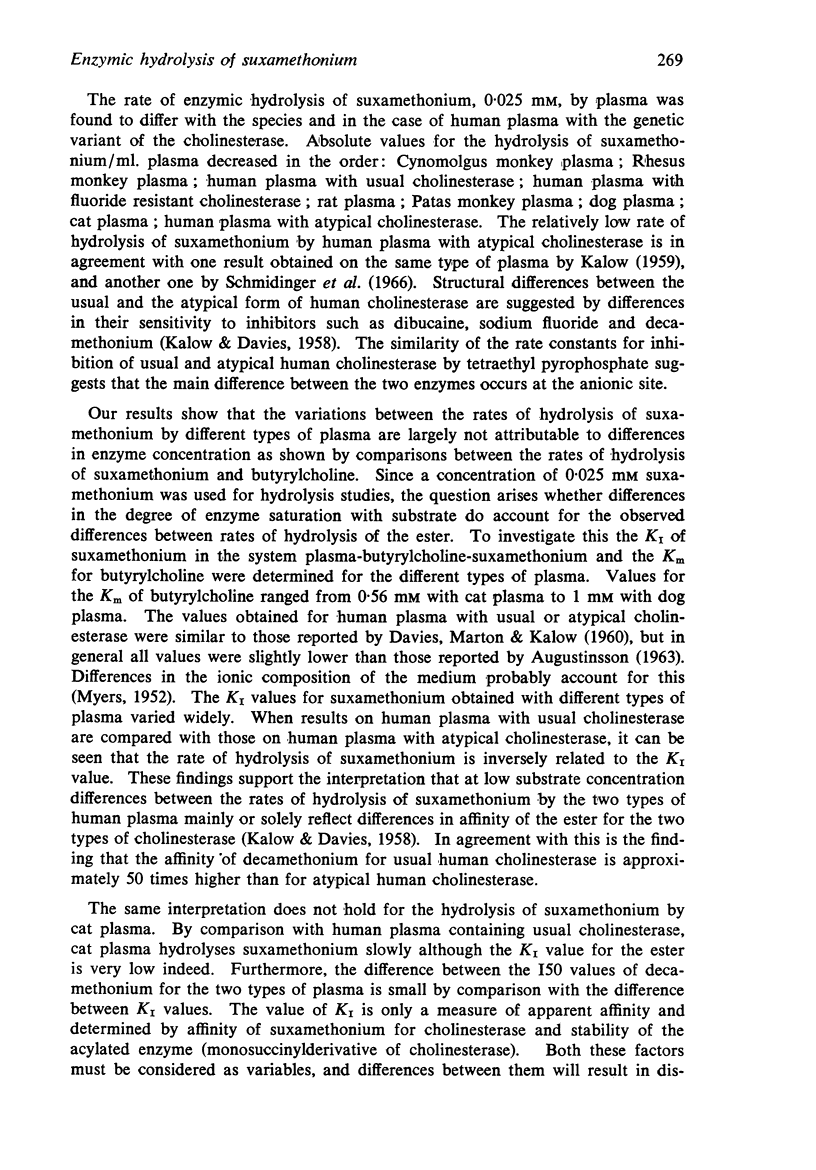


Selected References
These references are in PubMed. This may not be the complete list of references from this article.
- ARGENT D. E., DINNICK O. P., HOBBIGER F. Prolonged apnoea after suxamethonium in man. Br J Anaesth. 1955 Jan;27(1):24–30. doi: 10.1093/bja/27.1.24. [DOI] [PubMed] [Google Scholar]
- BRUCKE F. Dicholinesters of alpha, omega-dicarboxylic acids and related substances. Pharmacol Rev. 1956 Jun;8(2):265–335. [PubMed] [Google Scholar]
- DAVIES R. O., MARTON A. V., KALOW W. The action of normal and atypical cholinesterase of human serum upon a series of esters of choline. Can J Biochem Physiol. 1960 Jun;38:545–551. [PubMed] [Google Scholar]
- EVANS F. T., GRAY P. W. S., LEHMANN H., SILK E. Sensitivity to succinylcholine in relation to serum-cholinesterase. Lancet. 1952 Jun 21;1(6721):1229–1230. doi: 10.1016/s0140-6736(52)92059-x. [DOI] [PubMed] [Google Scholar]
- Griffiths P. D., Davies D., Lehmann H. A second family demonstrating the homozygote for fluoride-resistant pseudocholinesterase variant. Br Med J. 1966 Jul 23;2(5507):215–216. doi: 10.1136/bmj.2.5507.215. [DOI] [PMC free article] [PubMed] [Google Scholar]
- HALL L. W., LEHMANN H. Response in dogs to relaxants derived from succinic acid and choline. Br Med J. 1953 Jan 17;1(4802):134–136. doi: 10.1136/bmj.1.4802.134. [DOI] [PMC free article] [PubMed] [Google Scholar]
- HARRIS H., WHITTAKER M. Differential inhibition of human serum cholinesterase with fluoride: recognition of two new phenotypes. Nature. 1961 Jul 29;191:496–498. doi: 10.1038/191496a0. [DOI] [PubMed] [Google Scholar]
- KALOW W., GENEST K. A method for the detection of atypical forms of human serum cholinesterase; determination of dibucaine numbers. Can J Biochem Physiol. 1957 Jun;35(6):339–346. doi: 10.1139/y57-041. [DOI] [PubMed] [Google Scholar]
- KALOW W., GUNN D. R. The relation between dose of succinylcholine and duration of apnea in man. J Pharmacol Exp Ther. 1957 Jun;120(2):203–214. [PubMed] [Google Scholar]
- KALOW W., LINDSAY H. A. A comparison of optical and manometric methods for the assay of human serum cholinesterase. Can J Biochem Physiol. 1955 Jul;33(4):568–574. [PubMed] [Google Scholar]
- KALOW W., STARON N. On distribution and inheritance of atypical forms of human serum cholinesterase, as indicated by dibucaine numbers. Can J Biochem Physiol. 1957 Dec;35(12):1305–1320. [PubMed] [Google Scholar]
- KALOW W. The distribution, destruction and elimination of muscle relaxants. Anesthesiology. 1959 Jul-Aug;20(4):505–518. doi: 10.1097/00000542-195907000-00008. [DOI] [PubMed] [Google Scholar]
- KLUPP H., STUMPF C. Uber Unterschiede in der enzymatischen spal-Tung von Dicarbonsaure-bis-cholinestern durch Menschen-, Pferde- und Hundeserum. Enzymologia. 1953 Sep 30;16(3):189–192. [PubMed] [Google Scholar]
- LIDDELL J., LEHMANN H., SILK E. A 'silent' pseudo-cholinesterase gene. Nature. 1962 Feb 10;193:561–562. doi: 10.1038/193561a0. [DOI] [PubMed] [Google Scholar]
- LULLMANN H., FORSTER W. Uber die Wirkungen neuromuskulär blockierender Substanzen auf den Rückenmuskel des Blutegels und den M. rectus abd. des Frosches. Naunyn Schmiedebergs Arch Exp Pathol Pharmakol. 1953 Jan 5;217(2):217–224. [PubMed] [Google Scholar]
- MYERS D. K. Effect of salt on the hydrolysis of acetylcholine by cholinesterases. Arch Biochem Biophys. 1952 Jun;37(2):469–487. doi: 10.1016/0003-9861(52)90208-7. [DOI] [PubMed] [Google Scholar]
- NORTON S., DE BEER E. J. Excretion of succinyldicholine in urine of cat and mouse. J Pharmacol Exp Ther. 1954 Apr;110(4):392–397. [PubMed] [Google Scholar]
- Schmidinger S., Held K. R., Goedde H. W. Hydrolysis of succinyldicholine by Pseudocholinesterase at low concentrations. Humangenetik. 1966;2(2):221–224. doi: 10.1007/BF00291523. [DOI] [PubMed] [Google Scholar]
- TSUJI F. I., FOLDES F. F., RHODES D. H., Jr The hydrolysis of succinyldicholine chloride in human plasma. Arch Int Pharmacodyn Ther. 1955 Dec 1;104(2):146–155. [PubMed] [Google Scholar]
- WHITTAKER V. P., WIJESUNDERA S. The hydrolysis of succinyldicholine by cholinesterase. Biochem J. 1952 Nov;52(3):475–479. doi: 10.1042/bj0520475. [DOI] [PMC free article] [PubMed] [Google Scholar]
- Whittaker M. An additional pseudocholinesterase phenotype occurring in suxamethonium apnoea. Br J Anaesth. 1968 Aug;40(8):579–582. doi: 10.1093/bja/40.8.579. [DOI] [PubMed] [Google Scholar]


